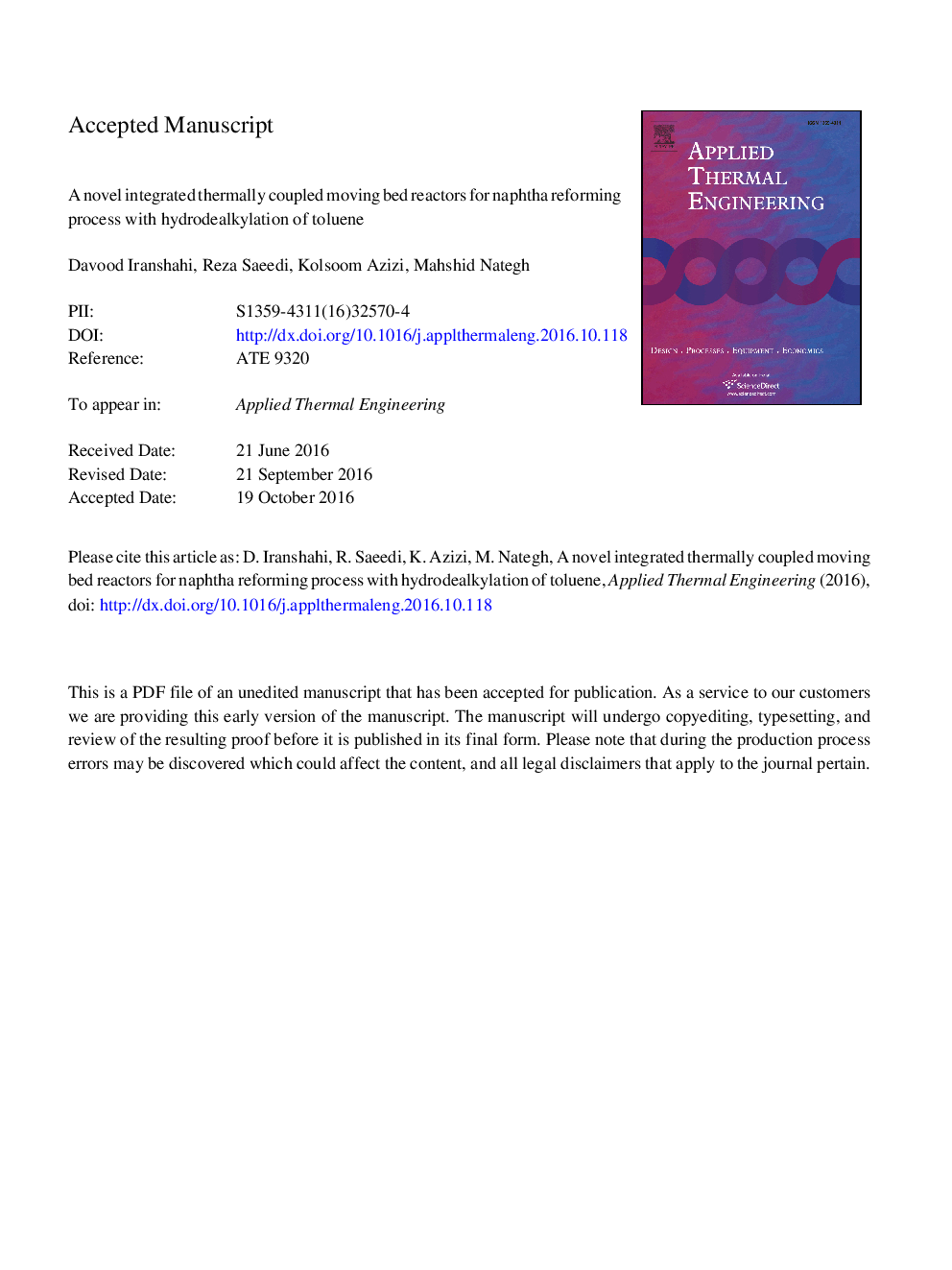| Article ID | Journal | Published Year | Pages | File Type |
|---|---|---|---|---|
| 4991773 | Applied Thermal Engineering | 2017 | 65 Pages |
Abstract
Due to the importance of catalytic naphtha reforming process in refineries, development of this process to attain the highest yield of desired products is crucial. In this study, continuous catalyst regeneration naphtha reforming process with radial flow is coupled with hydrodealkylation of toluene to prevent energy loss while enhancing aromatics and hydrogen yields. In this coupled process, heat is transferred between hot and cold sections (from hydrodealkylation of toluene to catalytic naphtha reforming process) using the process integration method. A steady-state two-dimensional model, which considers coke formation on the catalyst pellets, is developed and 32 pseudo-components with 84 reactions are investigated. Kinetic model utilized for HDA process is homogeneous and non-catalytic. The modeling results reveal an approximate increase of 19% and 23% in aromatics and hydrogen molar flow rates, respectively, in comparison with conventional naphtha reforming process. The improvement in aromatics production evidently indicates that HDA is a suitable process to be coupled with naphtha reforming.
Related Topics
Physical Sciences and Engineering
Chemical Engineering
Fluid Flow and Transfer Processes
Authors
Davood Iranshahi, Reza Saeedi, Kolsoom Azizi, Mahshid Nategh,
